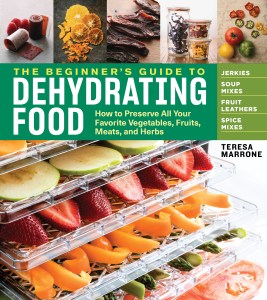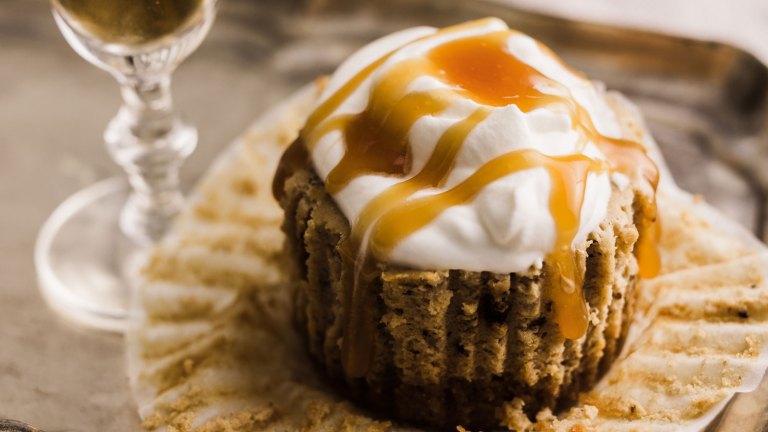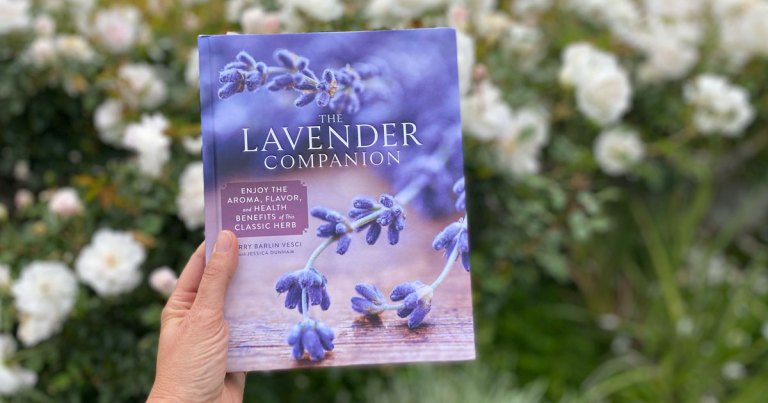Making and Using Dried Blueberries
With berry season upon us, we’re trying a few different ways to preserve and enjoy the freshness of the harvest beyond pies and jams. This week, we’re drying things out.
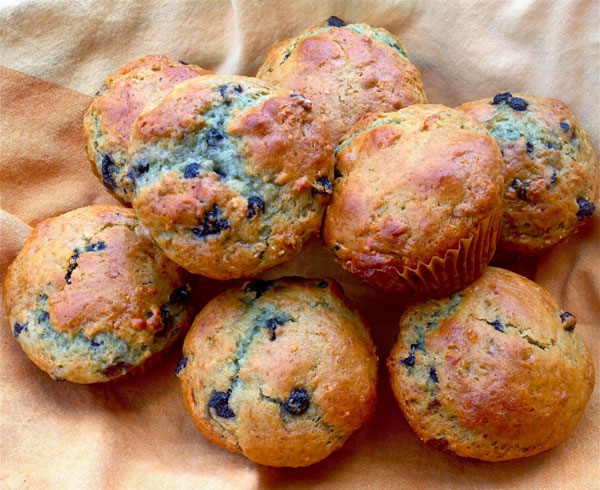
I’ll be honest: when it comes to blueberries, I’m an eat-’em-fresh or freeze-’em kind of girl. After all, we rarely get so many blueberries at once that they become a problem. That said, we have about a dozen or so varieties of blueberry bushes in our yard and, as they mature and yield more fruit, we are faced with the prospect of actually having some leftover to put up. We’re fortunate enough to have a chest freezer in our basement, but if you don’t have the space for an extra freezer (or simply don’t like the cost of keeping one running), and if you’d rather avoid the food panic that sets in with a power outage, dehydrating is your best friend.
Teresa Marrone, author of The Beginner’s Guide to Dehydrating Food, 2nd Edition, writes that, when it comes to successfully dehydrating small berries like blueberries, checking, or breaking, the skin of the fruit before drying is key. Without checking, berries like blues or huckleberries will swell and can take days to dry. But be forewarned: blueberries can’t just be blanched in boiling water like other fruit. “Because blueberries are so tender and small, the fruit cooks quickly during blanching, breaking apart or becoming too soft to spread on the dehydrator trays.”
Marrone suggests syrup-blanching your blueberries before drying, to check the skin and for a more pleasurable eating experience. “Fruits that have been syrup-blanched are softer and more brightly colored than those pretreated by other methods and are less likely to darken during storage….Brief syrup-blanching checks the fruit and also improves the taste and texture.”
How to Syrup-Blanch Blueberries:
Combine 1 cup sugar, 1 cup corn syrup, and 2 cups water in a nonreactive saucepan (as an alternative to corn syrup, use a total of 1½ cups sugar and 2½ cups water). Heat to boiling, stirring until the sugar dissolves completely. Add the prepared fruit. Adjust the heat so the mixture simmers but does not boil. Large blueberries should be syrup-blanched by simmering (not boiling) for 3 minutes; small blueberries should be syrup-blanched for 2 minutes. (For high altitudes, add 30 seconds to the time specified for each 2,000 feet of elevation above sea level). Remove the fruit with a slotted spoon and drain; for less sticky dried fruit, rinse briefly in cold water and drain.
Dehydrate using a dehydrator or convection oven, the sun, or a conventional oven.
[Note: Dehydrating times will vary, based on the method you use. More detailed information and tips for drying methods can be found in The Beginner’s Guide to Dehydrating Food, 2nd Edition.]
Doneness test: Shrunken, dark, wrinkled, leathery to hard, with a dry texture. Syrup-blanched berries will be pliable and slightly sticky but no longer moist inside; they may be more flattened than berries that have not been syrup-blanched.
Yield: 1 pound fresh berries yields ¾ to 1 cup of dried berries, depending on the size of the berries. When rehydrated, 1 cup of dried berries yields 1⅓ to 1½ cups.
Of course, you can rehydrate your dried berries for pies and cobblers after the peak season is over, but, as Marrone writes, the dried fruit used just as they are pack a flavorful punch in granola or trail mix, and serve as an excellent stand-in for any recipe that calls for dried cranberries or raisins (a major perk for me, a raisin-hater). The blueberry flavor is unmistakable in these Lemon-Blueberry Yogurt Muffins, which bake up incredibly moist.
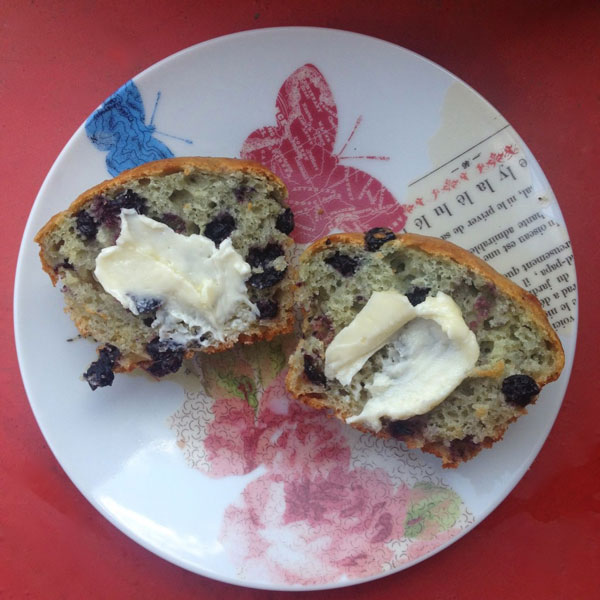
Lemon-Blueberry Yogurt Muffins
Makes 12 muffins
Ingredients
- 1 cup dried blueberries
- 1 cup lemon yogurt
- 2 teaspoons lemon juice
- 2 cups all-purpose flour
- 1 teaspoon baking soda
- 1 teaspoon baking powder
- ½ cup sugar
- 4 tablespoons butter, melted and cooled slightly
- 2 tablespoons honey
- ½ teaspoon salt
- 2 eggs, lightly beaten
Directions
Preheat the oven to 375°F. Grease a 12-cup muffin tin, or line with paper liners.
Stir together the dried blueberries, yogurt, and lemon juice in a large mixing bowl; set aside to rest for 15 minutes.
Meanwhile, sift together the flour, baking soda, and baking powder into a medium mixing bowl; set aside.
When the blueberry-yogurt mixture has rested for 15 minutes, add the sugar, butter, honey, salt, and eggs; stir well with a wooden spoon. Add the flour mixture and stir just until moistened; do not over mix or the muffins will be tough.
Spoon the batter into the prepared muffin tin and bake for 15 to 20 minutes, or until golden brown. Cool on a wire rack for 15 minutes, and then turn the muffins out onto the rack to cool completely.
Excerpted from The Beginner’s Guide to Dehydrating Food, 2nd Edition. © Teresa Marrone.
You’ll learn to dry fruits and vegetables at their peak, giving you an easy and economical way to stock your pantry with apple rings, mango slices, banana chips, dried soup beans, tomatoes, and much more for year-round enjoyment. In addition, drying guidelines for specialty items like meat jerky, fruit leather, dried herb and spice mixtures, backpacking meals, and even baby food round out this friendly handbook.
